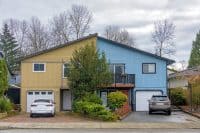 The number of foreclosure starts fell 21.9% in October according to the latest data from Lender Processing Services Inc. (NYSE: LPS). Year-over-year, new foreclosures are down 48% and the foreclosure inventory of homes for sale is down 7% compared with last year.
The number of foreclosure starts fell 21.9% in October according to the latest data from Lender Processing Services Inc. (NYSE: LPS). Year-over-year, new foreclosures are down 48% and the foreclosure inventory of homes for sale is down 7% compared with last year.
The decline is likely to be only temporary, though, an LPS executive explained:
This decline coincided with the implementation of new procedural changes outlined in the National Mortgage Settlement, which requires, among other things, that mortgage servicers provide written notice to borrowers 14 days prior to referring a delinquent loan to a foreclosure attorney. This has resulted in what is likely a temporary slowdown in foreclosure starts that we do not believe is indicative of a longer-term trend.
LPS also reported that the total U.S. loan delinquency rate now stands at 7.03%, and that the month-over-month rate fell 4.91% from September to October.
Home prices are expected to rise 5% to 7% in 2012, but, LPS reports, overall sales volumes remain low:
During the past 12 months, there have been approximately 4.1 million residential real estate sales, less than half the annualized rate at the market’s peak in November 2005. Further, 1.3 million of those transactions have been distressed sales, compared to just 226,000 at the peak. As a point of reference, despite 2012’s healthy rate of appreciation, home prices are still nearly 23 percent off their June 2006 peak.
A conclusion that one may draw from that is that as more foreclosed properties work their way into the market, home price rises may slow down significantly. That may lure in more buyers, but new home builders could suffer.
Paul Ausick
In 20 Years, I Haven’t Seen A Cash Back Card This Good
After two decades of reviewing financial products I haven’t seen anything like this. Credit card companies are at war, handing out free rewards and benefits to win the best customers.
A good cash back card can be worth thousands of dollars a year in free money, not to mention other perks like travel, insurance, and access to fancy lounges.
Our top pick today pays up to 5% cash back, a $200 bonus on top, and $0 annual fee. Click here to apply before they stop offering rewards this generous.
Flywheel Publishing has partnered with CardRatings for our coverage of credit card products. Flywheel Publishing and CardRatings may receive a commission from card issuers.
Thank you for reading! Have some feedback for us?
Contact the 24/7 Wall St. editorial team.


